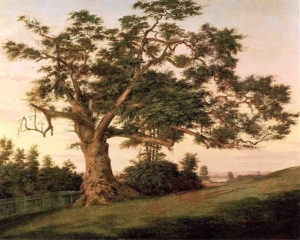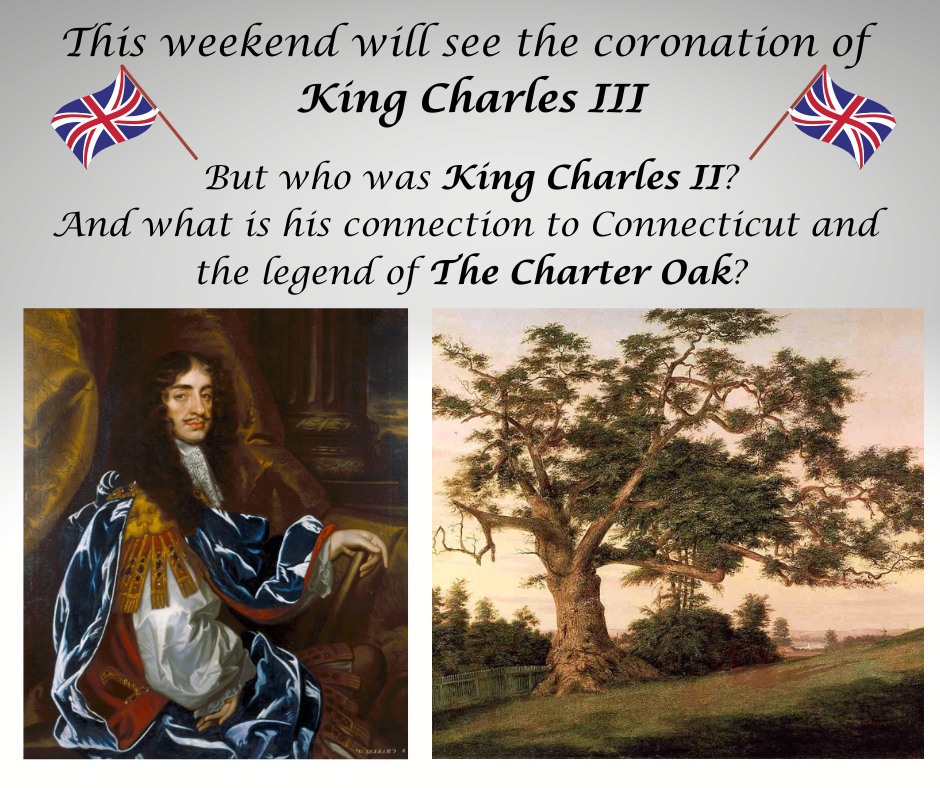 𝑰𝒏 𝟏𝟔𝟔𝟐, 𝒕𝒉𝒆 𝒄𝒐𝒍𝒐𝒏𝒚 𝒐𝒇 𝑪𝒐𝒏𝒏𝒆𝒄𝒕𝒊𝒄𝒖𝒕, 𝒐𝒘𝒏𝒆𝒅 𝒂𝒏𝒅 𝒈𝒐𝒗𝒆𝒓𝒏𝒆𝒅 𝒃𝒚 𝑬𝒏𝒈𝒍𝒂𝒏𝒅, was granted a Royal Charter by King Charles II. The “Connecticut Charter” permitted the colony to make some of its own rules and to elect certain officials. Charles’s death in 1685 brought his brother, James II, to the throne. James disapproved of the Royal Charters and demanded their return because they interfered with his plan to establish the Dominion of New England—a combination of the New England colonies and the colony of New York under the leadership of one royal official.
𝑰𝒏 𝟏𝟔𝟔𝟐, 𝒕𝒉𝒆 𝒄𝒐𝒍𝒐𝒏𝒚 𝒐𝒇 𝑪𝒐𝒏𝒏𝒆𝒄𝒕𝒊𝒄𝒖𝒕, 𝒐𝒘𝒏𝒆𝒅 𝒂𝒏𝒅 𝒈𝒐𝒗𝒆𝒓𝒏𝒆𝒅 𝒃𝒚 𝑬𝒏𝒈𝒍𝒂𝒏𝒅, was granted a Royal Charter by King Charles II. The “Connecticut Charter” permitted the colony to make some of its own rules and to elect certain officials. Charles’s death in 1685 brought his brother, James II, to the throne. James disapproved of the Royal Charters and demanded their return because they interfered with his plan to establish the Dominion of New England—a combination of the New England colonies and the colony of New York under the leadership of one royal official.
𝑰𝒏 𝟏𝟔𝟖𝟕, 𝑺𝒊𝒓 𝑬𝒅𝒎𝒐𝒏𝒅 𝑨𝒏𝒅𝒓𝒐𝒔, 𝒕𝒉𝒆 𝑹𝒐𝒚𝒂𝒍 𝑮𝒐𝒗𝒆𝒓𝒏𝒐𝒓 𝒐𝒇 𝒕𝒉𝒆 𝑫𝒐𝒎𝒊𝒏𝒊𝒐𝒏, met with leaders of the Connecticut colony in Hartford. Debates continued for hours into the night as the colonists steadfastly refused to give up the Charter. According to legend, all of the candles in the meeting house suddenly blew out and, during the confusion, the Charter disappeared and was hidden in the trunk of a large white oak tree, the 𝐂𝐡𝐚𝐫𝐭𝐞𝐫 𝐎𝐚𝐤, where it was protected from the King and from Andros.
The Charter Oak was an unusually large white oak tree growing on Wyllys Hyll in Hartford from around the 12th or 13th century until it fell during a storm in 1856.
According to tradition, Connecticut’s Royal Charter of 1662 was hidden within the hollow of the tree to thwart its confiscation by the English governor-general. The oak became a symbol of American independence and is commemorated on the Connecticut State Quarter. In 1935, for Connecticut’s tercentennial, it was also depicted on both a commemorative half dollar and a postage stamp.
The oak was blown down by a violent, tempestuous storm on August 21st, 1856 and timber from it was made into a number of chairs now displayed in the Hartford Capitol Building. The desk of the Governor of Connecticut and the chairs for the Speaker of the House of Representatives and President of the Senate in the state capitol were made from wood salvaged from the Charter Oak. Another chair was made by noted painter Frederic Church, a native of Hartford, and is still on display at his former home.
A wooden baseball made from the Charter Oak was presented by the Charter Oak Engine Co. No. 1 on September 20, 1860 to the Charter Oak Base Ball Club of Brooklyn. A cane made from a branch of the Charter Oak was presented to President Andrew Johnson by supporters in January 1868, as impeachment proceedings were underway.









